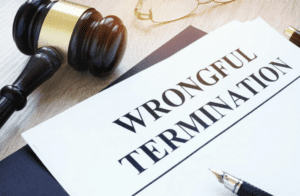| TYPE OF CLAIM | TIME LIMIT |
| DISCRIMINATION CLAIMS | |
| These claims, which must be filed with the EEOC, include the following types of issues:
Race discrimination Sex discrimination (including stereotypes based on caregiving status) Pregnancy discrimination Age discrimination Discrimination based on disability under the Americans with Disabilities Act (ADA) |
45 days (government employees to report to EEO)
180 days to report to the EEOC if there is no local agency with a work-sharing agreement with the EEOC 300 days to report to the EEOC if there is an agency with a work-sharing agreement with the EEOC (these agencies include the District of Columbia Office of Human Rights, as well as the Arlington, Fairfax, and Alexandria Offices of Human Rights) |
| WAGE AND HOUR CLAIMS | |
| Fair Labor Standards Act (FLSA)
You can file these claims with the US Department of Labor, but it is not required. |
Rolling two-year statute of limitations, meaning the limitations period reaches back two years from the date of your last paycheck |
| Equal Pay Act (EPA) You can file these claims with the EEOC, but it is not required. |
Two-year statute of limitations for nonwillful violations Three-year statute of limitations for willful violations
In other words, you have two years to bring a lawsuit if you find out that you are being paid less than your male colleagues doing similar work. If evidence suggests that your employer instituted the unequal payment intentionally, the period is extended to three years. If you choose to file with the EEOC, this does not stop the statute of limitations from running, unlike other claims that you file with the EEOC. This means if you file a charge with the EEOC eighteen months after the violation, and it takes the EEOC seven months to issue a right-to-sue letter, you will have lost your ability to file in court, unless you can show that your employer intentionally violated the EPA, which can be difficult to do. |
| Family Medical Leave Act (FMLA)
You can file these claims with the US Department of Labor, but it is not required. |
Two-year statute of limitations for nonwillful violations. Three-year statute of limitations for willful violations The lawsuit must be filed within two years of the last action that violated the FMLA; the statute extends to three years if the employer intentionally violated the statute. |
| SECTION 1981 CLAIMS | |
| 42 USC Section 1981 prohibits racial discrimination in the right to “make and enforce” contracts, including employment contracts. These claims are not handled by an administrative agency and so must be pursued in a lawsuit | Four Years |
| EMPLOYEE RETIREMENT INCOME SECURITY ACT (ERISA) CLAIMS | |
| If you file a claim with your insurance company and it denies the claim, you can appeal the decision to the insurance company. If the insurance company again denies your claim, you can file a second appeal with the US Department of Labor or in federal court. ERISA claims can also be brought against a defendant for denying benefits for a discriminatory reason. | Three years from the date of a proof of loss under the plan |
| ASSAULT AND BATTERY CLAIMS | |
| Threats of physical battery and unwanted touching are illegal in most states. | Varies by state:
|
| TITLE VI & IX CLAIMS | |
| Title VI makes it unlawful for an educational institution to discriminate on the basis of race. Title IX makes it unlawful to discriminate on the basis of sex. These claims can be filed in federal court or with the US Department of Education, Office of Civil Rights. |
|





